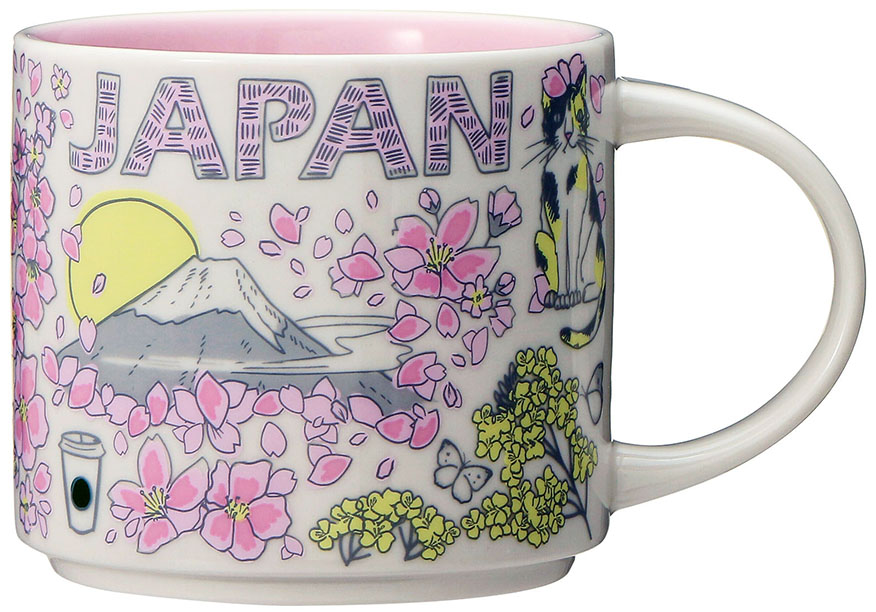
Been There – Japan Spring Edition
Similarly to the previous collection, Starbucks released the Special Edition country mugs for Japan. In fact, each season gets a custom interpretation of the regular mug’s design.
Been There – Japan 2 Spring Edition is dedicated to the spring season, known as “haru”. It is a breathtaking tapestry of renewal and vibrant beauty. Cherry blossoms, or “sakura,” symbolize the essence of this season, painting the landscape in shades of pink and white as they bloom across the country. These delicate flowers not only herald the arrival of warmer weather but also evoke a sense of fleeting yet profound beauty, celebrated through hanami, the centuries-old tradition of flower viewing. Beyond the cherry blossoms, spring in Japan brings a burst of life to its gardens and parks, with colorful tulips, irises, and azaleas adding to the spectacle. As nature awakens from its winter slumber, so too does the spirit of the Japanese people, who embrace the season with festivals, picnics under blooming trees, and a renewed sense of optimism for the year ahead.
As you can see in the comparison photo below, while the designs have similar sets of Japanese symbols and landmarks, some of them are unique to the Sprint Edition though:
– The monkeys on the front and the red sakura flowers on the back are replaced with some yellow flowers (rapeseed I guess?). Sakura is not gone, obviously, and takes up a big portion of the front of the mug, replacing sushi and Kendama. The latter is a traditional Japanese skill toy consisting of a wooden handle with cups at both ends and a ball connected by a string. Players aim to perform various tricks by catching the ball on different parts of the handle or in the cups.
– The kimono on the back of the mug is replaced with Koinobori. These are traditional Japanese carp-shaped windsocks, which are vibrant symbols of Children’s Day, celebrated on May 5th. These colorful streamers, often seen fluttering in the wind, represent strength, courage, and success. Families across Japan hoist them high on poles, each carp symbolizing a family member, with the largest carp representing the father, and the smaller ones representing the children. It’s a beautiful sight, as these graceful fish dance in the breeze, embodying the hopes and dreams parents have for their children, wishing them a prosperous future.
– The ramen gives place to Dango, a delectable Japanese treat, that consists of small, round dumplings made from rice flour. These delightful morsels are often skewered onto bamboo sticks and served in groups of three or four. Dango comes in various flavors, including traditional options like mitarashi (a sweet soy glaze) and anko (sweet red bean paste), as well as modern twists like matcha and sakura. Loved for its chewy texture and subtly sweet taste, the dango is a beloved snack enjoyed year-round in Japan, with each bite offering a delightful blend of simplicity and satisfaction.



















































































